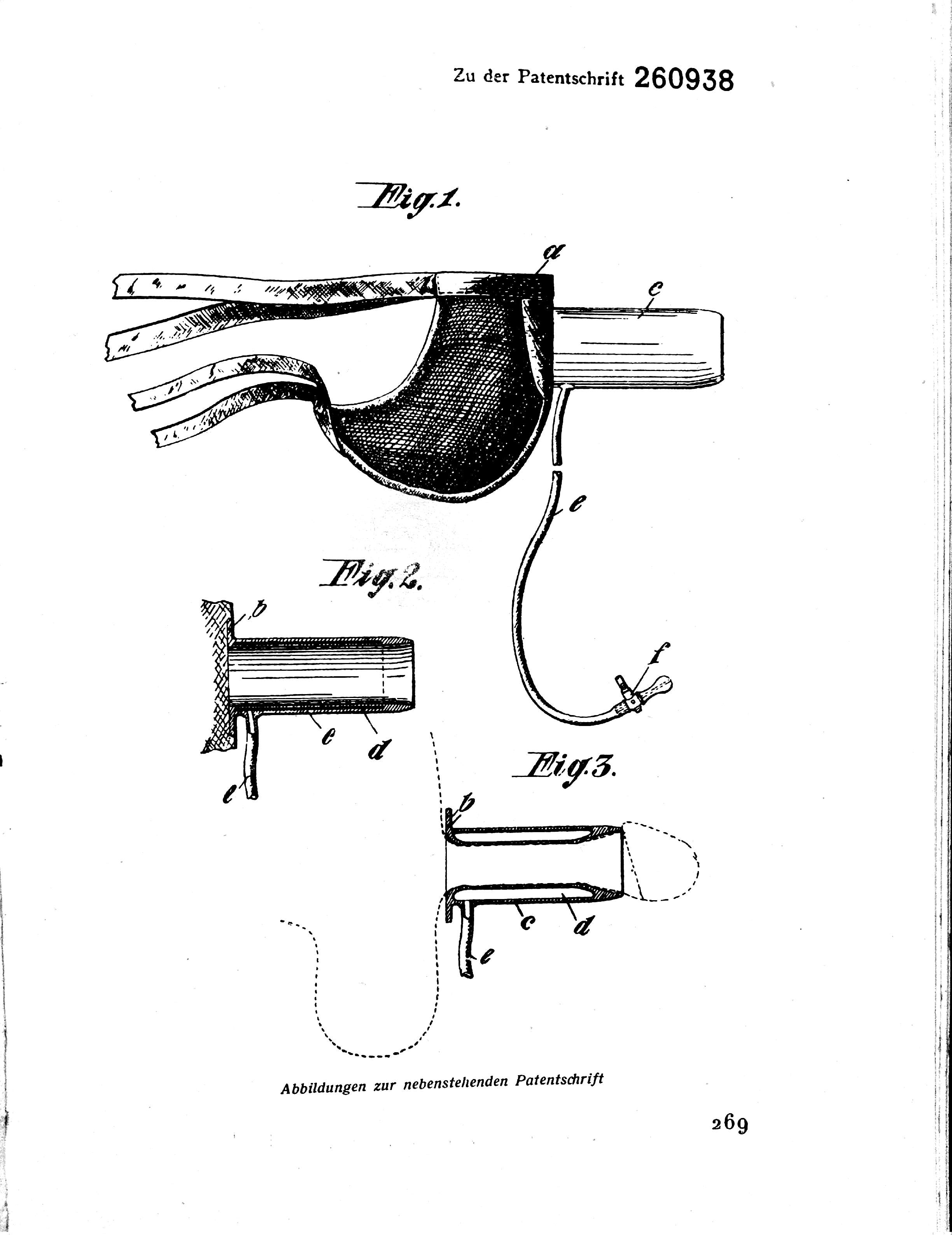Doing Sex. Zur Herstellung von Männlichkeit|en durch Prothesentechnik
DOI:
https://doi.org/10.17169/ogj.2017.9Keywords:
Doing Gender, Geschlechtskörper, Prothesen, Erster Weltkrieg, Männlichkeit, GenitalprothetikAbstract
The main argument of this article focuses on the ‘doing’ of gender through the use of prosthetics, and the particularity that can be found in this field. While ‘doing gender’ is obvious in products such as razors or bikes that function through their (gender) scripts, prosthetics take ‘doing gender’ even further: The examples of breast and testicle implants and penile prosthetics help to show how gender can be modeled by ‘doing sex’ through technology. The article focuses specifically on the literature surrounding the mass supply of artificial limbs to amputee soldiers during World War I. It demonstrates that the handling and rehabilitation of war-related injuries of the genitals were often a taboo in the Weimar Republic. Because of this silence, there have been no comprehensive studies or artifact collections on the cultural and technical history of male genital prosthetics. By presenting different examples of potential artifacts for such a history the article suggests an object based approach to fill this academic void.
References
Adamczak, Bini (2016): Come on. Über ein neues Wort, das sich aufdrängt – und unser Sprechen über Sex revolutionieren wird. In: Analyse + Kritik Nr. 614, 15.03.2016. http://www.akweb.de/ak_s/ak614/04.htm (letzter Zugriff am 29.09.2016).
Barad, Karen (2012): Agentieller Realismus. Berlin: Suhrkamp.
Bihr, Simon (2013): Entkrüppelung der Krüppel. In: NTM Zeitschrift für Geschichte der Wissenschaften, Technik und Medizin 21(2), 107-141.
Bodiwala, D.; Summerton, D.J.; Terry, T.R. (2007): Testicular Prostheses: Development and Modern Usage. In: The Annals of The Royal College of Surgeons of England 89(4), 349-353. doi: http://dx.doi.org/10.1308/003588407X183463.
Bretan, P. N. (1989): History of the prosthetic treatment of impotence. In: The Urologic Clinics of North America. 16(1), 1-5.
Connell, Raewyn (2015): Der gemachte Mann: Konstruktion und Krise von Männlichkeiten. 4., durchges. und erw. Aufl., Springer VS.
Eerikäinen, Hannu (2005): Liebe deine Prothese wie dich selbst. In: Das Argument 260, 212- 223.
Fineman, Mia (1999): Ecce Homo Prostheticus. In: New German Critique 76, 85-114.
Harrasser, Karin (2009): Passung durch Rückkopplung. Konzepte der Selbstregulierung in der Prothetik des ersten Weltkrieges. In: Fischer, Stefan; Maehle, Erik; Reischuk, Rüdiger (Hg.): Informatik 2009: Im Fokus das Leben. Proceedings, Bonn (Gesellschaft für Informatik), 788-801.
Harrasser, Karin (2013): Sensible Prothesen. Medien der Wiederherstellung von Produktivität. In: Body Politics 1(1), 99-117.
Hirschauer, Stefan (1994): Die soziale Fortpflanzung der Zwei-Geschlechtlichkeit. In: Kölner Zeitschrift für Soziologie und Sozialpsychologie 46/4, 668–692.
Hirschauer, Stefan (2001): Das Vergessen des Geschlechts: Zur Praxeologie einer Kategorie sozialer Ordnung. Kölner Zeitschrift für Soziologie und Sozialpsychologie (Sonderheft 41), 208-235.
Horn, Eva (1998): Die Mobilmachung der Körper. In: Transit: europäische Revue 16, 92-108.
Horn, Eva (2001): Prothesen. Der Mensch im Lichte des Maschinenbaus. In: Keck, Anette; Pethes, Nicolas (Hg.): Mediale Anatomien. Menschenbilder als Medienprojektionen. Bielefeld: Transcript, 193-211.
Horn, Eva (2002): Maßnahmen und Medien zur Wiederherstellung des versehrten Leibes in der Weimarer Republik. In: Schmidt, Dietmar (Hg.): KörperTopoi. Sagbarkeit – Sichtbarkeit – Wissen. Weimar: Verlag und Datenbank für Geisteswissenschaften, 100-139.
Jurik, Nancy C.; Siemsen, Cynthia (2009): ‚Doing Gender‘ as Canon or Agenda: A Symposium on West and Zimmerman. In: Gender and Society 23(1), 72-75.
Kienitz, Sabine (1999): Die Kastrierten des Krieges: Körperbilder und Männlichkeitskonstruktionen im und nach dem Ersten Weltkrieg. In: Zeitschrift für Volkskunde H. 95, 63-82.
Kienitz, Sabine (2010): Prothesen-Körper. Anmerkungen zu einer kulturwissenschaftlichen Technikforschung. In: Zeitschrift für Volkskunde H. 106, 137–162.
Machtens, Stefan; Jonas, Udo (2000): Erektionsphysiologie – Diagnostik und Therapie der erektilen Dyfunktion. In: Schultheiss, Dirk; Rathert, Peter; Jonas, Udo (Hg.): Streiflichter aus der Geschichte der Urologie. Berlin, New York: Springer, 155-168.
Messerschmidt, James W. (2009): ‚Doing Gender‘: The Impact and Future of a Salient Sociological Concept. In: Gender and Society 23(1), 85-88.
Panchasi, Roxanne (1995): Reconstructions: Prosthetics and the Rehabilitation of the Male Body in World War I France. In: Differences 7(3), 109-140.
Perry, Heather R. (2005): Brave Old World. Recycling der Kriegskrüppel während des Ersten Weltkrieges. In: Orland, Barbara (Hg.): Artifizielle Körper – lebendige Technik: technische Modellierungen des Körpers in historischer Perspektive. Zürich: Chronos-Verlag, 147-158.
Preciado, Paul B. (2016): Testo Junkie. Sex, Drogen, Biopolitik in der Ära der Pharmapornographie. Berlin: b_books.
Schultheiss, Dirk (2009): A Brief History of Urinary Incontinence and its Treatment. In: Incontinence. Paris: Health Publications Ltd, 19-34. http://www.ics.org/publications/ici_3/v1.pdf/historique.pdf (letzter Zugriff am 29.09.2016).
Schultheiss, Dirk; Gabouev, Alexander; Jonas, Udo (2005): Nikolaj A. Bogoraz (1874–1952): Pioneer of Phalloplasty and Penile Implant Surgery. In: The Journal of Sexual Medicine 2, 139-146.
Serlin, David (2002): Engineering Masculinity: Veterans and Prosthetics After World War Two. In: Ott, Katherine; Serlin, David; Mihm, Stephen (Hg.): Artificial Parts, Practical Lives: Modern Histories of Prosthetics. New York: NYU Press, 45-74.
Simmons, M.; Montague, D.K. (2008): Penile Prosthesis Implantation: Past, Present and Future. In: International Journal of Impotence Research. 20(5), 437-444.
Soyka-Hundt, Benjamin (2015): Hodenprothesen bei Patienten mit Hodenkrebs. Eine retrospektive Analyse des Prothesenwunsches und eine systematische Evaluation der Zufriedenheit der Implantatträger mit der Prothese, Dissertation. http://www.diss.fu-berlin.de/diss/receive/FUDISS_thesis_000000100573 (letzter Zugriff am 29.09.2016).
Van Oost, Ellen (2003): Materialized Gender: How Shavers Configure the Users ‚Femininity and Masculinity. In: Oudshoorn, Nelly und Trevor Pinch (Hg.), How Users Matter: The Co-Construction of Users and Technology, Cambridge;London: MIT, 193–208.
West, Candace; Zimmerman, Don H. (1987): Doing Gender. In: Gender and Society 1(2), 125–151.
West, Candace; Zimmermann, Don H. (2009): Accounting for Doing Gender. In: Gender and Society 23/1, 12–22.
Wilson, S.K.; Delk, J.R. (2000): Historical Advances in Penile Prostheses. In: International Journal of Impotence Research 12(4), 101-104.

Downloads
Additional Files
Published
How to Cite
Issue
Section
License
All contributions in Open Gender Journal are published under the Creative Commons Attribution 4.0 International license. You may freely make use of the corresponding texts in accordance to the conditions of the license (License contract, generally understandable version). There is no exclusive transfer of usage rights ("copyright transfer"). Open Gender Journal does not charge authors any costs for publication (so-called Article Processing Charges, APC) or submission (so-called Submission Charges). Authors are encouraged to share their contributions in other places, such as repositories.













